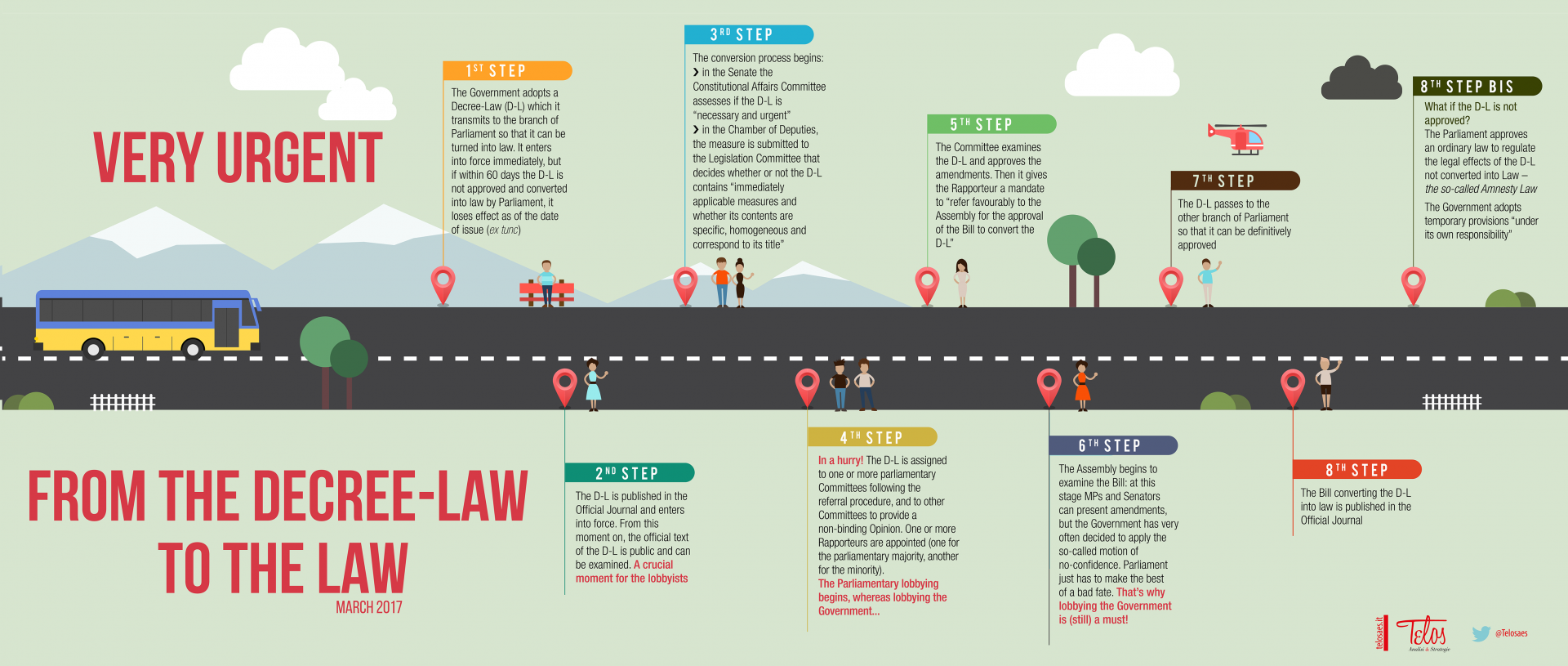Decree-Law. A question of confidence. Very often.
The Decree-Law (D-L). Everyone talks about it, but how does it work in practice?
We will try to highlight in 8 steps its process to become a Law. If it makes it!
- The Government adopts a D-L which it transmits to the branch of Parliament
- The D-L is published in the Official Journal and enters into force. From this moment on, the official text is public. A crucial moment for the lobbyist
- The conversion process begins
- In a hurry! The D-L is assigned to one or more parliamentary Committees and one or more Rapporteurs are appointed. The Parliamentary lobbying begins
- The Committee examines the D-L and approves the amendments. Then it gives the Rapporteur a mandate to “refer favourably to the Assembly for the approval of the Bill to convert the D-L”
- The Assembly begins to examine the Bill: amendments can be tabled, but the Government has very often decided to apply the so-called motion of no-confidence. Parliament just has to make the best of a bad fate. Who did not lobby the Government is in trouble. Wrong!
To know about the other steps… check out Telos A&S infographics!
A matter of language.
A decree is a rule of law issued by a head of state (such as the president of a republic), according to certain procedures (usually established in a Constitution). It has the force of law. The particular term used for this concept may vary from country to country — the executive orders made by the President of the United States, for example, are decrees (although a decree is not exactly an order).
To keep these news items in a beautiful graphic form, or to learn, for example, the most important moments when to trigger a lobbying activity, just pin the infographics by Telos A&S you’ll find on Pinterest






SocialTelos